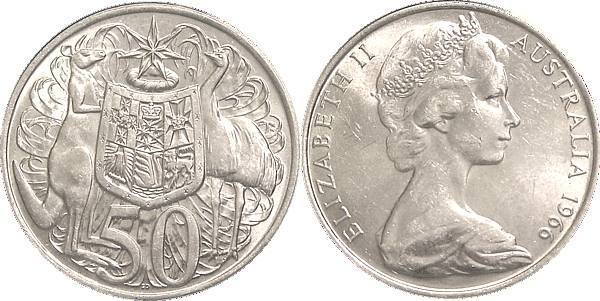Can A Leaders Agility And Humility Be Separated?
Leadership and learning are indispensable to each other. John F. Kennedy
In todays turbulent environments any separation of leading, learning, and execution becomes a barrier to agility as it interferes with accountability and unity of action.
Together these dynamics shape the conditions for organisational agility to emerge as hubris gives way to humility - and the organisation thrives in changing conditions.
The most common definition of humble is ‘having or showing a modest or low estimate of one’s own importance.’
I think our definition of humility is culturally flavored, and mostly wrong. Many times when discussing this from a Western paradigm the common definition is that humility comes from Humus (earth) - “grounded”, “from the earth”, or “low”.
So humility is viewed as one viewing self as someone below others, insignificant.
However, authentic humility is neither self-abasement nor overly positive self-regard.
Bradley Owens, et. al, say that, “humility entails a deeply held belief of shared human limits and worth shapes how individuals view themselves (objectively), others (appreciatively), and new information (openly). (p 7)”
June Tangney says that, “the theological, philosophical, and psychological literature portray humility as a rich, multifaceted construct, in sharp contrast to dictionary definitions … the key elements of humility seem to include the:
- accurate assessment of one’s ability and achievements (not low self-esteem, self-deprecation)
- ability to acknowledge one’s mistakes, imperfections, gaps in knowledge, and limitations (often vis-a-vis a “higher power”)
- openness to new ideas, contradictory information, and advice.
- keeping one’s abilities and accomplishments - one’s place in the world - in perspective (e.g., seeing oneself as just one person in the larger scheme of things).
- relative low self-focus, a “forgetting of the self,” while recognising that one is part of the larger universe.
- appreciation of the value of all things, as well as the many different ways that people and things can contribute to our world. (p 73-74)”
It is these points of gathering new information, acknowledging knowledge gaps and openness, that I believe is important to agility.
Agility in a leader, to me, means a leader who is nimble, has the ability to think and draw conclusions quickly. An agile leader is one who is open to new ideas and learning’s, and has the ability to learn quickly and apply those learnings appropriately.
Leadership Agility = learning?
Arrogance and hubris are the real culprit to agility:
Arrogance looks like: Individuals motivated by self-interest, self-indulgence, and a false sense of self-sufficiency who pursue selfish ambition for the purpose of self-glorification.
Hubris is defined as excessive pride that brings down a hero, or alternatively as outrages arrogance that inflicts suffering upon the innocent.
Arrogance/hubris closes one off to ideas and learnings. Such a leader becomes self-sufficient believing that they already have (or should have) all the answers. They become stiff, fixed, inflexible in their opinions, ideas and learnings.
Is pride healthy or unhealthy?
The American Heritage Dictionary defines pride as “a sense of one’s own proper dignity and value; self-respect.”
“How in the world did a nice emotion like pride get elected the first of the seven deadly sins? Why is pride not one of the cardinal virtues?” Willard Gaylin
Pride is a very positive characteristic which can easily become destructive. Pride describes a feeling of positive regard for ourselves, a very healthy feeling. Without humility, pride become conceit and ARROGANCE.
Because we as a Western culture have virtually ignored the virtue humility, the value we place on pride is understandably low.
The proud yet humble man feels good about himself for who he is. He does not need to elevate himself on the failure of others. Because he is also aware of his limitations, he retains a feeling of admiration for humanity. His humility allows him to have pride in others, and be taught by others regardless of either’s position, power or stature.
I look at it like this:
Humility = Learning = Agility
Imagine it like a coin. One side, humility, has the image on it. The other side, learning, has the value on it.
When you hold the coin side on you see neither (but both at the same time), agility.
If you remove either the image side (you become arrogant), or the value side (stop learning, you become obtuse), the coin becomes useless (you become stiff and unable to adapt quickly).
Arrogance = Obtuseness = Rigidity
A great leader knows they have the power to fire, demote, intimidate and harass to achieve their goal, but chose not to. Instead they realise that to bring lasting, effective change and ultimately the organisations success is not dependent on them alone.
Great Leaders blend an understanding of their weaknesses with their single minded determination controlled for the success of the employees, organisation and self.
Great leaders are learners, and are willing to be “educated” by many sources, not just a select group. Agility is a learning process that is enabled through shared interactions within an organisation and beyond.
COLLEEN SHAREN What is Humility in Leadership?
TANGNEY, JUNE P. (2000)., Humility: Theoretical Perspectives, Empirical Findings and Directions for Future Research. Journal of Social and Clinical Psychology, Vol 19. No 1. pp 70-82
Owens, Bradley P., Rowatt, Wade C., Wilkins, Alan L. A Exploring the Relevance and Implications of Humility in Organizations. Handbook of Positive Organizational Scholarship., September 1, 2010
BY TIMOTHY R. CLARK AND CONRAD A. GOTTFREDSON (2009)., Agile Learning: Thriving in the New Normal
Peggy Holman (2009)., The Change Handbook: The Definitive Resource on Todays Best Methods for Engaging Whole Systems.

